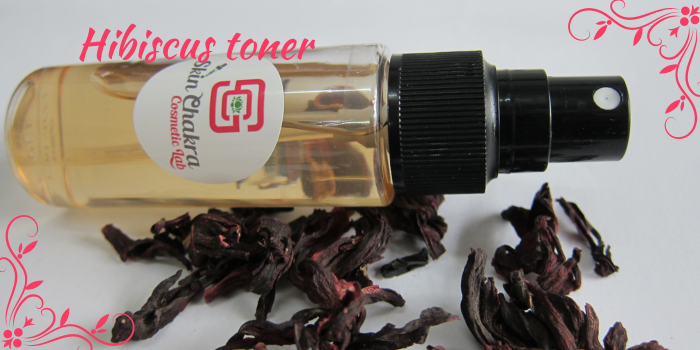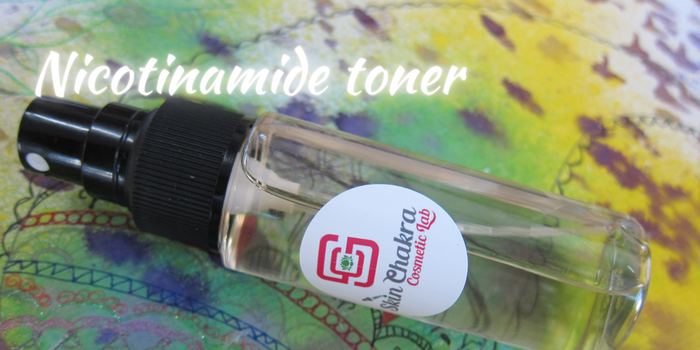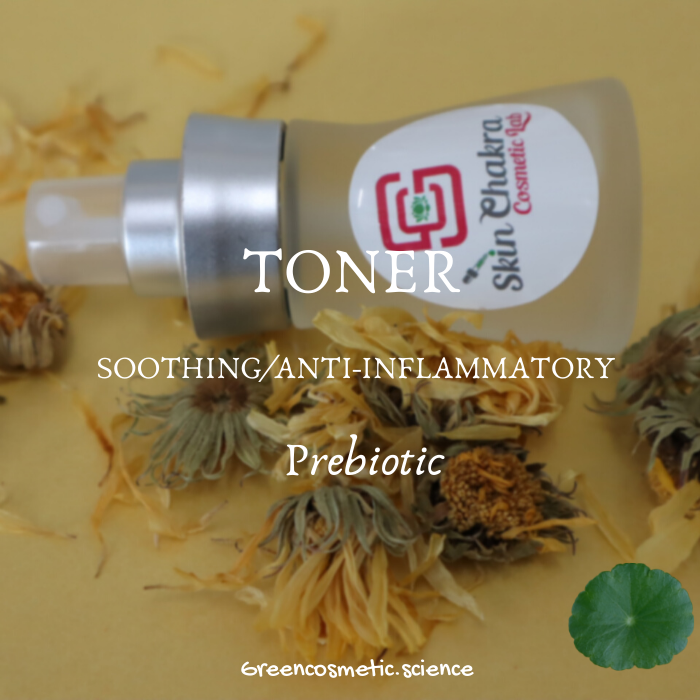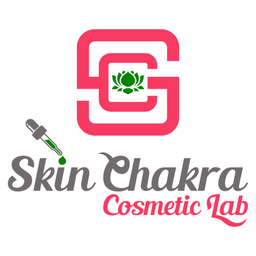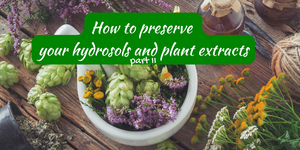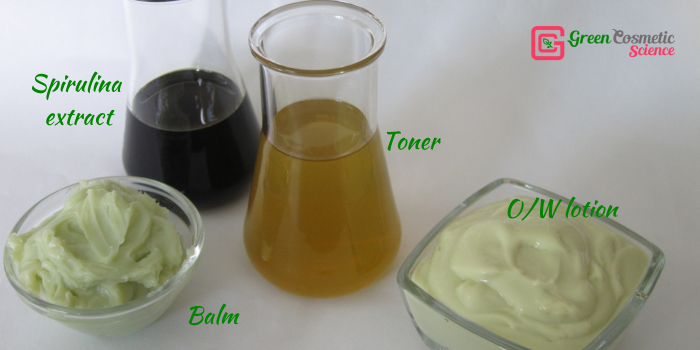
There was a discussion in our members' only facebook group about spirulina that inspired me to prepare a spirulina extract and use it in some formulations.
I don't eat fish and hate everything fishy. While my niece snacks on seaweed I have to run for the hills when I see anything related to fish on the table (quite oddly I love shrimps and caviar) and I never could get friendly with spirulina as a dietary supplement but I like its color in shampoo and shower bars and I appreciate its high mineral content for hair and skin care.
Although there are 1001 ways to prepare an infusion or extract we decided to go for an extract in pentylene glycol. We have actually prepared different infusions in water, glycerine and plant based pentylene glycol and the results (and the scent) were the best in PG. This is actually an infusion and there is no mechanical force involved to make an extract. We just prepared a 10% spirulina in PG solution. Stored it for 3 hours @55 C and filtered it after coming back to RT. Now the firltration process is quite time consuming and rather unnerving and you will need several steps of filtration so don't give up when your first filtration is not quite glorious.
PG is a preservative booster and a non-preservative preservative by reducing the water activity. We have explained about it in this post (members' only) in two exclusive posts this year.
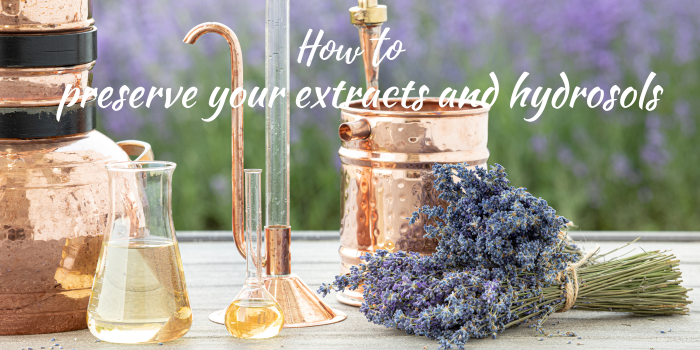
This means that we do not preserve the spirulina additionally but keep the extract in a closed bottle in the fridge.
We have prepared a toner, an O/W and a balm with this extract and today I am going to share the formulation of the toner here with you.
What is a toner at all?
There is not exactly a universal definition for a skin toner and the products on the market vary hugely in terms of application mode, ingredients and claims.
Long before modern cosmetics were available and during the time when they though water is the source of all infections and illnesses, the higher class folks used rosewater and neroli water to clean their skin and refresh themselves.
The word "toner" probably came to the world parallel with the health toner that was a mixture used to strengthen the health and was mainly sold by wandering salesmen (around 1900).
The early toners mainly contained alcohol for its astringent and cooling properties. DIY recipes (those days like today) were published in women's magazines.
This is a very interesting article about the history of toner and some of the early formulations if you are interested to know more.

During the days of skin cleansing with the lye soap toner was mainly used to bring the skin pH to neutral after using the alkaline soap. Today there are hundreds of claims and concepts for the toner based on the skin type, age, culture, and skin disorders.
Toners are actually one of those product groups that are quite easy to make and to fill for the artisanal manufacturers. You don't need expensive mixers and homogenizers and bulky and annoying filling machine. You can easily created batches up to 10 kg with a magnetic stirrer. There are a few pH measurement and adjustment steps necessary and there is a need for preserving, microbial and challenge testing if you are selling the product but once you have fixed a formulation and have preserved it efficiently you can go to the routine production and prepare batch after batch after batch. I always wonder why artisanal manufacturers, specially beginners do not try to start with something simple that can save them time, effort and money and can bring cash to the business so that they can use that cash in expanding the business and the portfolio. Well this is one of those mysteries that perhaps nobody can explain.
Although there are no limits and rules about when you can call a product a toner what is generally accepted as a toner is a product with a low viscosity that is applied (usually over face only) to refresh the skin after the cleansing (at least in the morning but usually in the morning and evening). As I mentioned before old-fashioned toners contained mainly of alcohol but today's mild toners boast being alcohol free. Toners usually contain humectants and moisturizers and have a pH between 4,5-5,5. There are toners with chemical peeling properties that have a slightly lower pH but in that case there must be a warning on the product to avoid sun after application.
A huge portion of the toner is the carrier. The carrier can be as simple as distilled, deionized or spring water, a hydrosol or blend of different hydrosols, a floral water/infusion or algae water. The sky is the limit. Since the toner is usually cold processed you can add as many amazing ingredients as you want but keep in mind that the more complex the formulation you make the more stability tests you need to run. More complex formulations may have a sticky skin feel in addition. Nobody wants to use a sticky product over her face right after washing the face in the morning. So do not exaggerate with your active ingredients. Keep It Silly Simple (KISS) is always a good concept.
Before you start formulating any toner you need to think about one of these two possibilities:
1- Using a fragrance or essential oil
2- Avoiding the FO or EO and leaving the toner plain or count on a hydrosol or a plant extract to impart the scent.
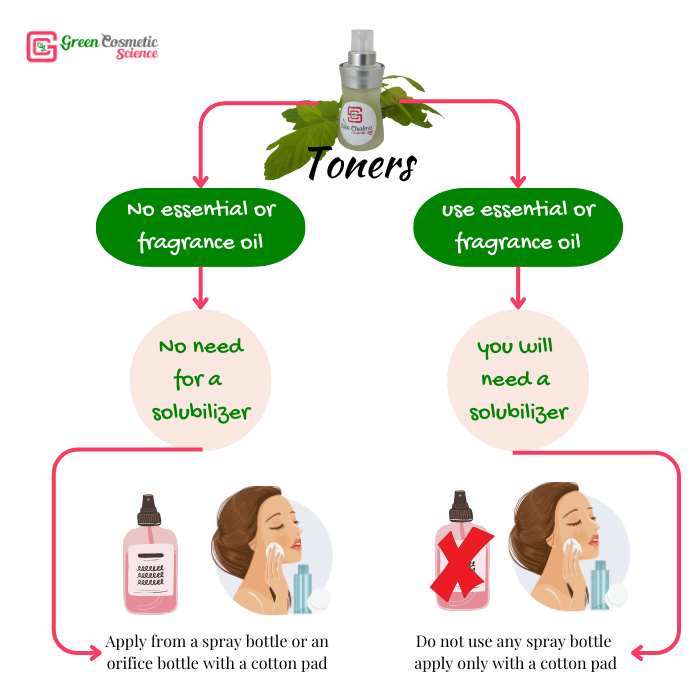
A toner is a water based formulation and obviously there is no way you can blend a fragrance oil or an essential oil with the water without any match maker.
In the early days of "natural" cosmetics there were several start ups that have just added the essential oil to the water based product and recommended that the customer shake the bottle before use. You could easily see the layer of the essential oil sitting on top of the carrier if the bottle was transparent. This is a very risky approach and although it is not completely forbidden (at least in the EU the safety assessors who have not lost their mind will not accept such formulations anymore), it isn't the way of making a professional product. The essential oil will never be uniformly distributed in the product and there is always a risk of overdosage and sensitization.
When you use a FO or an EO in a toner you need a match maker and that is a solubilizer. Now keep in mind that all solubilizers are surfactants and they foam. Some solubilizers foam more than the others but eventually all of them foam. If you decide to use a solubilizer, the best way of applying the toner will be with a cotton pad and not a spray bottle. When using a spray bottle for application of a toner with a solubilizer the foam will be quite unbearable whereas when you apply the same product with a cotton pad you will not even realize the foam.
We have made this formulation without any EO or FO and used our thyme hydrosol which magically covered the scent of the spirulina.
Now let's jump to the formulation

Procedure:
The procedure is really straightforward. It is a dump and stir formulation.
We add L-Arginine to phase A since we know that our hydrosol is preserved and has a low pH. This will avoid the degradation of other ingredients and the sedimentation of the preservative.
We measure the pH before adding the preservative to make sure it is in the range.
If you are still confused with the whole act of pH measurement and adjustment we have the right guide for you
.png)
We measure the pH once more after adding the preservative and bring it back to range by adding lactic acid.
1- Blend phase A in a beaker. The best way to do this is to use a magnetic stirrer
2- Take a sample and measure the pH (here you can measure the pH directly). The pH must be at least 4,9 when you add this preservative blend
3- Add the preservative. Take another sample and measure the pH again.
4- Adjust the pH between 5,2-5,5 if necessary
5- Take your stability and microbial samples and fill the rest in suitable containers
You may find these toners interesting as well:
